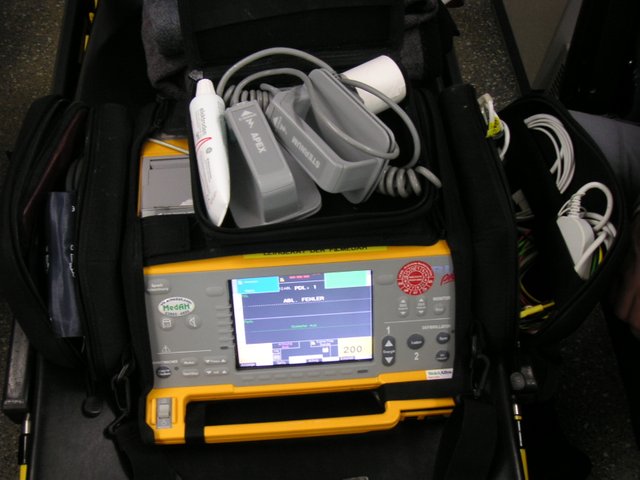
Global Defibrillators market would reach $15,610 million by 2022. Implantable cardioverter defibrillators (ICDs) segment is expected to dominate this market throughout 2015 and 2022. North America would continue to lead, accounting for more than two-fifths share of the world defibrillator market in 2015.
Download free sample Report @ https://www.alliedmarketresearch.com/request-sample/1434
Advent of automated external defibrillators (AEDs) for public access places, rising incidences of sudden cardiac arrest, and growing awareness towards public access defibrillators worldwide are the factors majorly driving the market growth. The rising number of application areas for defibrillators, coupled with increasing adoption of defibrillator systems (both ICDs and external defibrillators) in cardiology, is expected to boost the world defibrillators market growth. Cost-effectiveness, safety, high accessibility, and clinical value in preliminary treatment of sudden cardiac arrest strengthen the technological advancements in this market.
In addition, increase in number of advanced implantable cardiac defibrillators (S-ICDs, T-ICDs, and CRT-D) and awareness about early treatment of life threatening cardiac diseases (such as cardiac arrhythmia, ventricular fibrillation, and sudden cardiac arrest) are anticipated to further drive the demand for defibrillators globally. However, unawareness, unfavorable healthcare reforms, certain issues related to (external and implantable) defibrillators are the limitations that restrict the market growth.
The transvenous-implantable cardioverter defibrillator (T-ICDs) segment accounted for about 95% of the overall ICD market in 2015, as these are the most commonly used ICD's for the treatment of heart disorders for higher precision and targeted functioning. In addition, cardiac resynchronization therapy defibrillator (CRT-D) is the fastest growing segment and is projected to register a CAGR 5.0% during the forecast period. This is due to the growing demand of defibrillator that helps in restoring the heart back to a normal pace from faster heart rhythms and to prevent the heart rate to go below normal levels.
Discount on Purchase @ https://www.alliedmarketresearch.com/purchase-enquiry/1434
Automated external defibrillator (AEDs) segment is projected to maintain its lead in the overall external defibrillators market due to its increasing installations at public or private places such as schools, work place, airports, sports arenas, government offices, and others. The growing demand of AEDs in the developed economies of North America and Europe have further boosted the market growth. Furthermore, wearable external defibrillator is anticipated to exhibit the highest growth, with a CAGR of 12.3% during the forecast period. This is owed to the advanced protection by these defibrillators for sudden cardiac arrest and increase in demand from home healthcare facilities.
North America accounted for the majority of revenue in 2015 and is expected to maintain its dominance throughout the forecast period. This is attributed to the increased adoption of advanced defibrillators, increased awareness about public access defibrillator, increased procedure volumes resulting from rapidly aging population, and increasing incidence of cardiovascular diseases and sudden cardiac arrest (SCA). Moreover, improvement in healthcare expenditure further boosts the sale of home care defibrillators such as wearable external defibrillators and automated external defibrillator (AEDs).
"The ability of the defibrillator device to diagnose early onset of ventricular tachycardia and ventricular defibrillation is expected to promote its demand. On the other hand, the life-saving potential of automated external defibrillators (AEDs) in addition to positive legislations for installation of public access defibrillators (PAD) has witnessed the remarkable growth in the defibrillator market", states Hemali Narkhede, Manager, Healthcare Research at AMR. Also, stiff competition in the U.S. market has resulted in significant decrease in the cost of AEDs. The enforcement of the U.S. governmental law, which necessitates the installation of public access defibrillators (PAD) at public places has derived the growth of AEDs in this region.
However, Asia-Pacific is projected to be the fastest growing region throughout the analysis period. Japan, being dominant in the Asia-Pacific especially in external defibrillator market, contributes solely for the AEDs market share. This is a result of awareness about the early prevention of sudden cardiac arrest. Also, improving healthcare infrastructures and increasing expenditures in the emerging markets (such as India and China) to overcome the unmet medical needs in these countries have bolstered the market growth. Technological advancements for cost-effective devices in these nations offer a lucrative opportunity for the defibrillator market growth.
Key findings of the study:
In 2015, T-ICDs led the overall implantable defibrillator market revenue, and is projected to grow at a CAGR of 4.9% during the forecast period.
Wearable external defibrillator segment is expected to grow at a remarkable CAGR of 12.3%, owing to the non-invasive nature and increased demand of home healthcare for the treatment of sudden cardiac arrest.
Fully-automated defibrillator segment is projected to grow at a CAGR of 9.9% during the analysis period.
The automated external defibrillator (AEDs) is projected to generate the largest revenue in the world external defibrillator market.
Japan is the major shareholder accounting for about half share of the Asia-Pacific defibrillators market.
Read full Report @ https://www.alliedmarketresearch.com/defibrillator-market
The key players in the defibrillators market are focused on expanding their business operations in the fast-growing emerging countries with new product launches as a preferred strategy. The major players profiled in this report include ZOLL Medical Corporation (a subsidiary of Asahi Kasei Corporation), Stryker Corporation, Biotronik SE & Co. KG, Boston Scientific Corporation, LivaNova PLC, Medtronic plc, Koninklijke Philips N.V., Defibtech, LLC, St. Jude Medical, Inc., Nihon Kohden Corporation, and Cardiac Science Corporation.